My question is totally simple that is related to kubernetes awesome tool called KinD. I am using KinD for my flask application:
import os
import requests
from flask import Flask
from jaeger_client import Config
from flask_opentracing import FlaskTracing
app = Flask(__name__)
config = Config(
config={
'sampler':
{'type': 'const',
'param': 1},
'logging': True,
'reporter_batch_size': 1,},
service_name="service")
jaeger_tracer = config.initialize_tracer()
tracing = FlaskTracing(jaeger_tracer, True, app)
def get_counter(counter_endpoint):
counter_response = requests.get(counter_endpoint)
return counter_response.text
def increase_counter(counter_endpoint):
counter_response = requests.post(counter_endpoint)
return counter_response.text
@app.route('/')
def hello_world():
counter_service = os.environ.get('COUNTER_ENDPOINT', default="https://localhost:5000")
counter_endpoint = f'{counter_service}/api/counter'
counter = get_counter(counter_endpoint)
increase_counter(counter_endpoint)
return f"""Hello, World!
You're visitor number {counter} in here!\n\n"""
FROM python:3.7-alpine
RUN mkdir /app
RUN apk add --no-cache py3-pip python3 && \
pip3 install flask Flask-Opentracing jaeger-client
WORKDIR /app
ADD ./app /app/
ADD ./requirements.txt /app/
RUN pip install -r requirements.txt
EXPOSE 5000
CMD ["python", "/app/main.py"]
deployment.yaml:
apiVersion: apps/v1
kind: Deployment
metadata:
name: my-flask-deployment
spec:
selector:
matchLabels:
app: my-flask-pod
replicas: 2
template:
metadata:
labels:
app: my-flask-pod
spec:
containers:
- name: my-flask-container
image: yusufkaratoprak/awsflaskeks:latest
resources:
limits:
memory: "128Mi"
cpu: "500m"
ports:
- containerPort: 5000
service.yaml
apiVersion: v1
kind: Service
metadata:
name: my-flask-service
spec:
selector:
app: my-flask-pod
ports:
- port: 6000
targetPort: 5000
type: LoadBalancer
status:
loadBalancer:
ingress:
- ip: 203.0.113.10
Configmap.yaml:
apiVersion: v1
kind: ConfigMap
metadata:
namespace: metallb-system
name: config
data:
config: |
address-pools:
- name: default
protocol: layer2
addresses:
- 172.42.42.100-172.42.42.105 #Update this with your Nodes IP range
Results:
Everything looks good. When I write my browser: http://172.42.42.101:6000/
Result:
Also , I want to add my service events. Everything looks good :

and Also I want to add @Kaan Mersin advise : I added 80 as default port.




